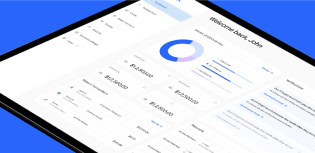A Smarter Way to Track Expenses Across Multiple Construction Projects

In the construction industry, managing expenses isn’t just about numbers—it’s about survival. Every mismanaged dollar can lead to delayed projects, strained client relationships, and lost business.
Despite these stakes, companies still struggle with timing and tracking financial information in real-time, classifying and allocating costs, and syncing field and office operations. According to Procore, these are three of the top four challenges in cost management. (Change management is the fourth.)
Exacerbating the problem, a survey in Construction Executive Magazine reports 58% of construction companies empower employees to make purchases, yet 61% still rely on manual processes to review spending. This disconnect can quickly lead to delays, errors, and financial mismanagement, especially when managing multiple projects.
Why Is Multi-Project Expense Tracking So Complicated for Construction Firms?
Whether it’s HVAC installations, roofing jobs, or construction projects, tracking expenses across multiple jobs is challenging. Here’s what we commonly hear from businesses:
- Shared credit cards: When multiple employees use the same credit cards for various jobs, it’s a recipe for confusion. Financial managers often find themselves blindsided by unexpected charges, with no clear way to determine who made the purchase or for which project. This lack of transparency can wreak havoc on budgets and timelines.
- Incomplete, inaccurate, and late expense reports: The construction business moves fast. Project and site managers use card purchases to keep jobs moving apace. Expense reports were the least of their concerns. Finance managers may get a pile of receipts on their desk, if they’re lucky.
- Lost and damaged receipts: A job site is no place for a thin slip of paper with fading ink. Especially when it’s stuffed into the pocket or wallet of a busy construction worker. Credit card charges with no receipts to back them up, no way to allocate the cost or pass it through are a problem everywhere. Finance teams tell us stories about weeks spent chasing down employees for receipts.
- Rogue charges: In the survey from Construction Executive, 56% caught wasteful spending/card abuse in the last year.
- Limited visibility into spending: All too often, executives don’t learn about expenses until the bill comes. This can lead to billing delays and cause project managers to make key financial decisions based on incomplete or outdated information. This disconnect between the office’s financial planning and the field’s operational realities can be the difference between being able to start on a new project.
- Slow, error-prone manual processes: In many companies, complete and approved expense reports didn’t make their way into the books as quickly as they should; 48% say they spend too much time on reconciliations.
- Zero visibility into subcontractor spending: Many construction companies depend on subcontractors, but often have no insight into their spending until after the job is done. Many financial departments have to wait for reports to find out what they bought and how it tracks to the budget.
That may look like a lot of issues, but many companies are turning to technology to simplify and streamline expenses across projects.
Using Technology to Build a Spend Visibility Framework
Financial managers often ask, “What are the best practices for managing costs with multiple subcontractors?” The answer is clear spending controls, automated approvals, and system integration to create a single source of truth.
Here are three key components to building an effective spend visibility framework:
- Corporate expense cards: The PEX Visa® Prepaid Card and PEX Visa® Commercial Card allow businesses to control spending with pre-set limits. This ensures purchases are authorized and aligned with project budgets. This ensures purchases are authorized and aligned with project budgets.
- Automated expense management systems: Implementing systems like PEX allows for real-time tracking of expenses, automatic receipt matching, and instant generation of transaction records.
- Spending rules: With PEX, businesses can embed rules into each card, blocking out-of-policy spending. For example, cards can be restricted based on time of use, transaction size, or merchant category.
These tools provide visibility into spending while ensuring that purchases align with company policies and project budgets. Better still, implementing the solutions makes your back office more resilient and efficient.
How to Replace Manual Processes and Improve Financial Control
Replacing manual processes with automated solutions is key to managing expenses efficiently across multiple projects. By using the right technology, businesses can gain real-time visibility into spending, reduce errors, and improve financial oversight.
Key technologies that help streamline expense management include:
- Automated approval workflows: Platforms like PEX simplify the approval process by allowing real-time expense approvals, ensuring that purchases align with company budgets and policies.
- ERP integrations: Integrating platforms like PEX with ERP systems such as Sage Intacct, QuickBooks, CMiC, and Procore ensures that all financial data is automatically synced. This eliminates manual data entry, reduces reconciliation errors, and speeds up the financial close process.
- Real-time expense tracking: With PEX, every transaction is automatically recorded, including details like the merchant, amount, and date. This gives finance teams immediate access to current financial data across all projects, reducing the time spent on manual reporting.
- Automated receipt matching and tagging: Employees can use PEX’s mobile app to capture receipts, which are then automatically matched to the appropriate transaction using AI. Cardholders can also tag expenses based on predefined categories aligned with the general ledger, simplifying the allocation process and improving tracking accuracy.
By consolidating these technologies into a single system, businesses can eliminate manual processes, gain control over their finances, and improve decision-making with real-time insights.
Streamline Expense Tracking Across Your Projects with PEX
Managing expenses across multiple projects doesn’t have to be a complex process. By utilizing modern tools like PEX, businesses can automate expense management, gain real-time visibility into spending, and streamline financial reporting. With features like prepaid cards, ERP integration, and automated workflows, companies can ensure that project costs are controlled and budgets stay on track. Ready to get more visibility into expense management across all of your projects? Learn how you can streamline your processes and keep your projects running smoothly.
Similar resources
Opinions, advice, services, or other information or content expressed or contributed here by customers, users, or others, are those of the respective author(s) or contributor(s) and do not necessarily state or reflect those of The Bancorp Bank, N.A. (“Bank”). Bank is not responsible for the accuracy of any content provided by author(s) or contributor(s).








